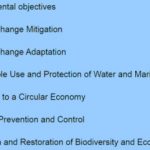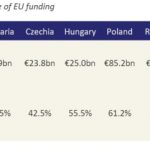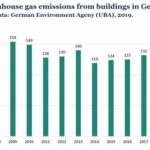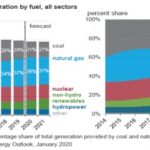The IEA’s World Energy Outlooks have no doubt that electrification alone cannot meet our climate goals. That’s why natural gas continues to play a major role. But biogas and biomethane have the potential to replace 20% of that gas, says the IEA’s special report “Outlook for biogas and biomethane: Prospects for organic growth”. At present only a fraction of that is being utilised. Here the IEA summarises their comprehensive report. Costs are the … [Read more...]
Germany’s drive to decarbonise its prized heavy industry: an overview
Sören Amelang at Clean Energy Wire runs through their collection of factsheets, analyses, reports and interviews that have tracked German industry’s attempts to grapple with decarbonisation. The very high energy intensity required by industries like steel, chemicals and cement makes a simple switch to clean electricity – short of a total redesign of processes – impossible. But Germany wants to maintain, even extend, its world leadership in … [Read more...]
How underground CCS works: low leakage risk, 2%
It’s not just the high upfront costs and the absence of a profitable business model that’s stalling the take-off of Carbon Capture and Storage (CCS). There are fears that CO2 stored underground will leak over the thousands of years it needs to be sequestered. The companies that put it there will be long gone. If you aren’t around to take the blame and pay the penalty, why bother doing it properly? Stephanie Flude at Oxford University and Juan … [Read more...]
Don’t blame Wind, Solar for Coal cycling. It’s everyday variable demand
Joseph Daniel at the Union of Concerned Scientists explains why variable renewables like wind and solar are not forcing coal plants to cycle (ramp up and down). He presents data from the U.S. that clearly shows it’s straightforward variable demand that’s doing it, because demand has always varied considerably throughout the day. So stop blaming the arrival and growth of wind and solar for this “inefficiency”, he says. These renewables have plenty … [Read more...]
Methane emissions underestimated by 25-40%, says new study
The methane in our atmosphere comes from natural biogenic (plants, animals) and fossil sources. By telling the difference we can know how much we humans are responsible for. It matters because methane is a potent greenhouse gas, second only to CO2. Previous “bottom-up” estimates came from multiplying the number of sources (livestock, natural gas operations, landfills) by their likely emissions. Robert McSweeney at Carbon Brief describes a new … [Read more...]
BP’s zero-carbon pledge: three major challenges
This month BP, one of the world’s largest oil and gas firms, announced its ambition to be a net zero emissions company by 2050. The promise extends to cutting the emissions of its customers too; after all, they’re the ones who are actually burning the fuel, not BP. So it aims to reduce the carbon intensity of its products by 50% by 2050 or sooner. Jules Kortenhorst, Tyeler Matsuo and Raghav Muralidharan at Rocky Mountain Institute take a look at … [Read more...]
What if Germany wasn’t shutting down Nuclear? Modelling Coal, Gas, Renewables, emissions, prices
Germany plans to shut down its entire nuclear fleet by 2022. Right now, of the original 17, only 7 are still running. The Fukushima nuclear accident in Japan of 2011 was the trigger for Germany’s abandonment of emissions-free nuclear as part of its clean energy goals. Maximilian Auffhammer at the Energy Institute at Haas reviews a paper by his colleagues that has modelled the whole-system effects of the shutdowns, then compared the results with a … [Read more...]
Canada is launching methane emissions rules for Oil and Gas
January 2020 marked the first time the Canadian government has targeted methane emissions from the oil and gas sector. They’ve committed to reduce oil and gas methane emissions by 40% to 45% below 2012 levels by 2025. Reducing methane emissions is considered one of the most cost-effective ways to cut global emissions. Methane equates to around 5.4% of the country’s total emissions of 716 Mt CO2-eq. The IEA estimates global methane emissions from … [Read more...]
Even cycling Coal is losing money. Only “summer” coal makes sense in Texas, Louisiana
Joseph Daniel at the Union of Concerned Scientists says a detailed look at the U.S. data shows the days of coal plants being the baseload kings are numbered. The declining costs of wind, solar and gas are making coal look expensive. What’s more, increasing energy efficiency is flattening peak demand (and therefore prices), squeezing those periods when coal could rely on finding customers. That means coal plant owners that say they deserve support … [Read more...]
60 years on, OPEC should take control again, cut supply, raise prices to fund its Transition
OPEC is often seen as no friend of the Transition. But Greg Muttitt points out that, although it did take an anti-climate stance in the 1990s, by the 2000s it had stepped back from climate negotiations, while some OPEC members became supporters. Muttitt says that, celebrating its 60th anniversary, it’s time for OPEC to remember its roots and organise its members to take control of their own destiny in the face of the inevitable rise of clean … [Read more...]
Defining green investments, ending greenwash: the EU’s new Taxonomy Regulation
When the EU Commission’s new Taxonomy Regulation is approved, expected in March, it will provide the legal framework to define what is a truly ‘green’ investment. As Luca Bonaccorsi at Transport & Environment explains, right now asset managers and national authorities are free to define what is green, allowing some to greenwash investments in things like oil and pesticides. The Taxonomy's purpose is to reduce ambiguity and therefore increase … [Read more...]
The EU can support Central and East Europe’s transition
Six Central and East European nations, heavily dependent on coal, have been very cautious about the pace of the EU’s transition. For them - Bulgaria, Czechia, Hungary, Poland, Romania and Slovakia - the political and economic disruption looks far harder to bear. E3G has just released a report that suggests this picture can change. The report’s authors – Felix Heilmann, Rebekka Popp and Ada Ámon – explain that coal is becoming less profitable, … [Read more...]
No Energiewende without Wärmewende: making Germany’s Heating emissions climate neutral (…nearly)
In Germany, space and water heating in buildings accounts for almost a third of total final energy consumption. Because over 90% of its 22m buildings are fuelled by oil and gas, that makes the sector emissions very intensive. The government’s ambition is to have a "nearly climate neutral building stock" by 2050. But although those emissions have fallen by 44% since 1990, progress has largely stagnated since 2011. Freja Eriksen at Clean Energy … [Read more...]
Carbon Tax: “laboratory” Europe shows U.S. it has no effect on aggregate jobs, growth
The issue of carbon taxes is under debate in the U.S. Congress. The fear is a new tax will destroy jobs and hinder growth. Will it? Meredith Fowlie at the Energy Institute at Haas says the U.S. should see Europe as a very useful carbon tax laboratory experiment: half the countries have some sort of tax, the other half don’t. She’s pulled together evidence to answer the simple question: does a carbon tax affect aggregate employment and growth. Her … [Read more...]
U.S. EIA predicts Renewables will surpass Coal by 2021
Renewable electricity generation in the U.S. has risen so fast in the last 10 years that it’s expected to surpass coal by 2021, according to the latest report from the nation’s Energy Information Administration (EIA). This would have been “unthinkable” in 2010, says Dennis Wamsted at IEEFA. Back then, nationwide, utility-scale solar generated 1.29bn kWh and wind 94.6bn kWh. By 2021 solar will have risen almost a hundredfold to 122bn kWh and wind … [Read more...]
- « Previous Page
- 1
- …
- 13
- 14
- 15
- 16
- 17
- …
- 19
- Next Page »
















